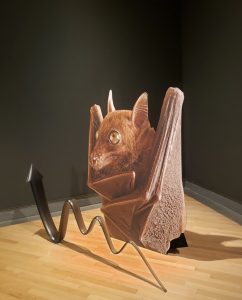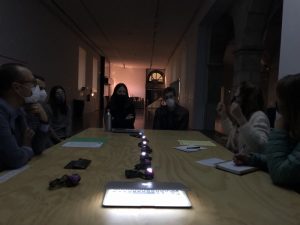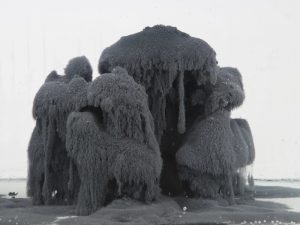Do you remember when Trevor Paglen, with the help of the Nevada Museum of Art and NASA, launched an inflatable reflective sculpture into space as a temporary satellite? The project had the objective of being the first “purely artistic” object in the night sky that does not have any military, commercial or scientific interest.
The plan was to keep the sculpture in orbit for three months where it would have been visible from the Earth as a bright star, after which it would burn up upon reentry to the Earth’s atmosphere. Unfortunately, the deployment was delayed by Trump’s decision to shut down the U.S. federal government in 2018–2019. By the time the 35-day shutdown had ended, the museum’s engineers had lost contact with the satellite. It is now lost in orbit, constituting space junk. Ironically, the episode showed that Paglen was right: it really is difficult to disentangle space endeavours from politico-military interests.
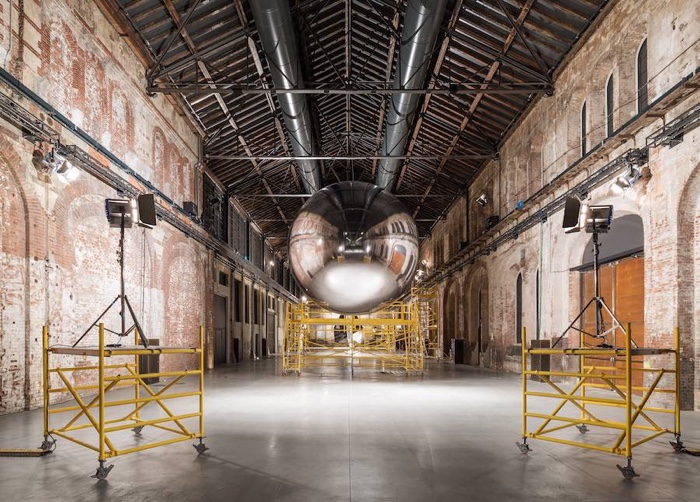
Trevor Paglen, Unseen Stars, 2020. Installation view at OGR Torino. Courtesy the artist and OGR – Officine Grandi Riparazioni, Torino. Photo © Melania Dalle Grave / DSL Studio

Trevor Paglen, Unseen Stars, 2020. Installation view at OGR Torino. Courtesy the artist and OGR – Officine Grandi Riparazioni, Torino. Photo © Melania Dalle Grave / DSL Studio
Some wondered why an artist whose photographic project, The Other Night Sky, tracked U.S. spy satellites in Earth orbit and investigated the political dimensions of space, would dedicate his time to what looked like a frivolous exercise. In an interview with artnet, Paglen was asked whether there was any point in adding a man-made object in the sky if it had no scientific nor military purpose. His answer is worth a bit of copy/pasting action:
“Implicit in that question,” said Paglen, “is the idea that art is not a good thing and that artists should not be participating in this form of production. Why are we offended by a sculpture in space, but we’re not offended by nuclear missile targeting devices or mass surveillance devices, or satellites with nuclear engines that have a potential to fall to earth and scatter radioactive waste all over the place?”
The project encouraged people to consider the idea of a space exploration driven by motivations that echo the dreams, the poetry and the questionings about our origins that the night sky has always elicited in the minds of humans looking at the stars.
OGR Open Sessions | Art Corner – Meet the artist Ep. #1 | Trevor Paglen
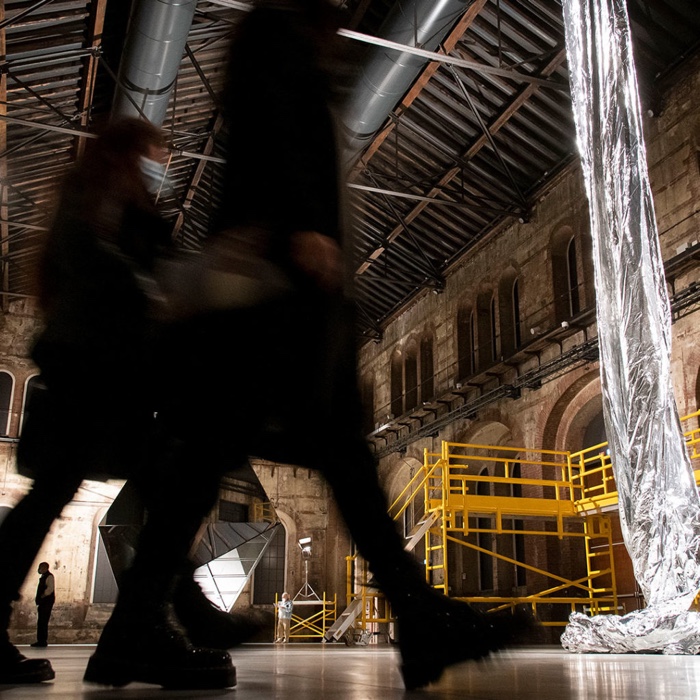
Trevor Paglen, Unseen Stars, 2020. Installation view at OGR Torino. Courtesy the artist and OGR – Officine Grandi Riparazioni, Torino. Photo © Melania Dalle Grave / DSL Studio
Trevor Paglen delved deeper into this idea of space as “a place of possibility” in Unseen Stars, an exhibition postponed, briefly opened at OGR in Turin, now closed and I’m hoping that it will be extended until cultural spaces are finally allowed to open again in Italy.
Paglen collaborated with aerospace engineers to design what he calls “non-functional satellites”. Their formal aspect is meant to suggest what aerospace engineering would look like if its methods had not been guided by nationalism, global surveillance and industrial logics.
Shown alongside structures similar to the scaffoldings used by space technicians and engineers, the mirror surfaces of the sculptures play with the XIXth century industrial architecture of the OGR. They reflect the brick walls and reshape the volumes of the massive hall.
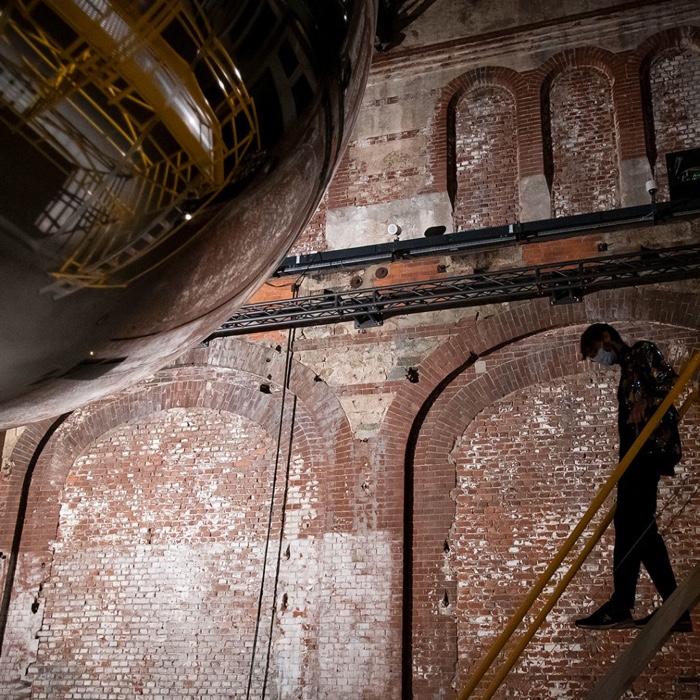
Trevor Paglen, Unseen Stars, 2020. Installation view at OGR Torino. Courtesy the artist and OGR – Officine Grandi Riparazioni, Torino. Photo © Melania Dalle Grave / DSL Studio
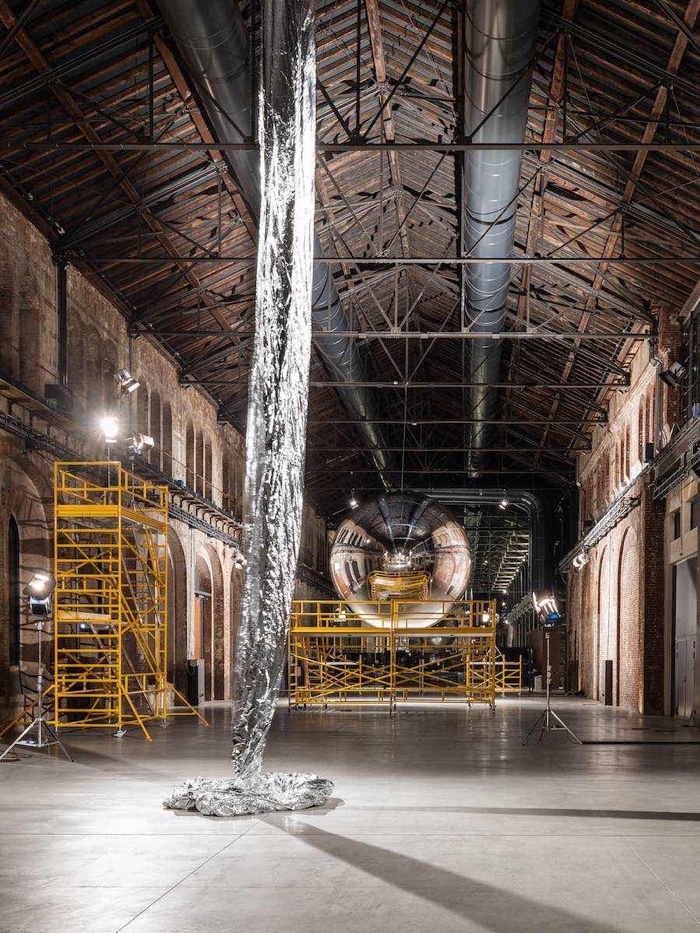
Trevor Paglen, Unseen Stars, 2020. Installation view at OGR Torino. Courtesy the artist and OGR – Officine Grandi Riparazioni, Torino. Photo © Melania Dalle Grave / DSL Studio

Trevor Paglen, Unseen Stars, 2020. Installation view at OGR Torino. Courtesy the artist and OGR – Officine Grandi Riparazioni, Torino. Photo © Melania Dalle Grave / DSL Studio
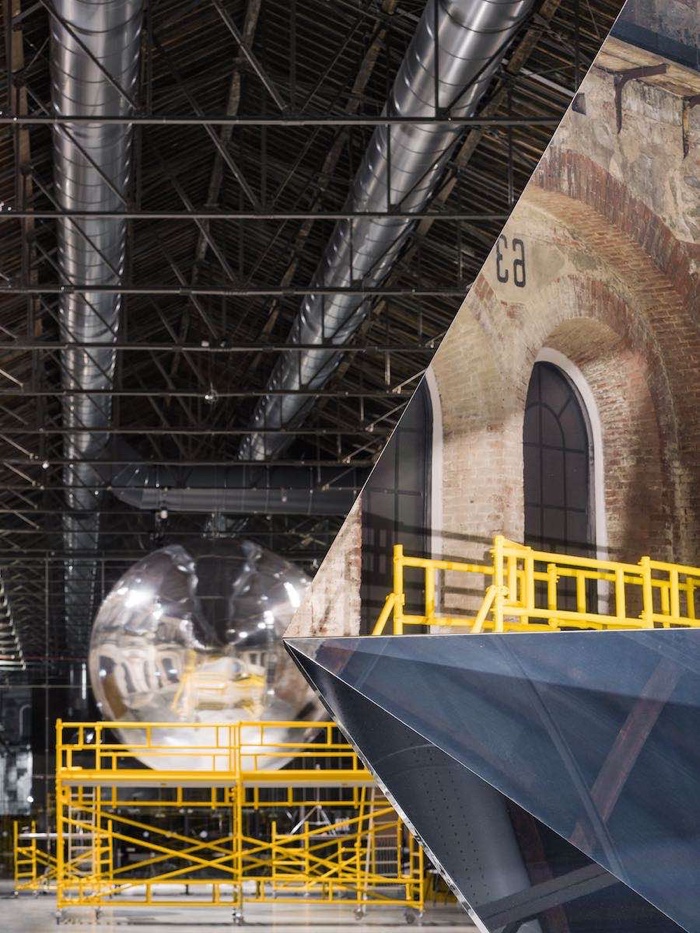
Trevor Paglen, Unseen Stars, 2020. Installation view at OGR Torino. Courtesy the artist and OGR – Officine Grandi Riparazioni, Torino. Photo © Melania Dalle Grave / DSL Studio
I wish the curators had provided more information about a series of military patches, historical documents and photos that were displayed on a table near the entrance. I think they showed the sources of inspiration for the exhibition. That’s on that table that I discovered the story of Echo 1, a passive satellite sent into orbit in 1960. It was launched folded flat and, once in space, it inflated in the shape of a huge balloon. Echo was a simple reflector used to bounce radio waves from one point on the surface of the Earth to another.
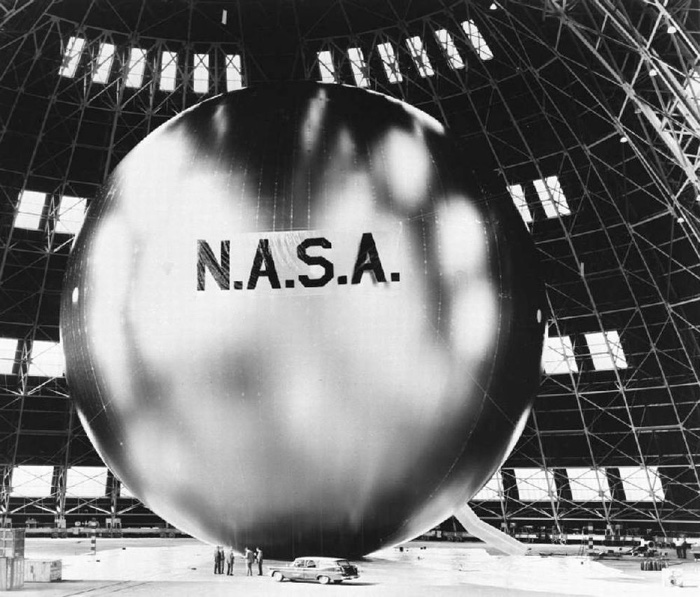
Echo 1 in a NASA hangar during an inflation test, 1960
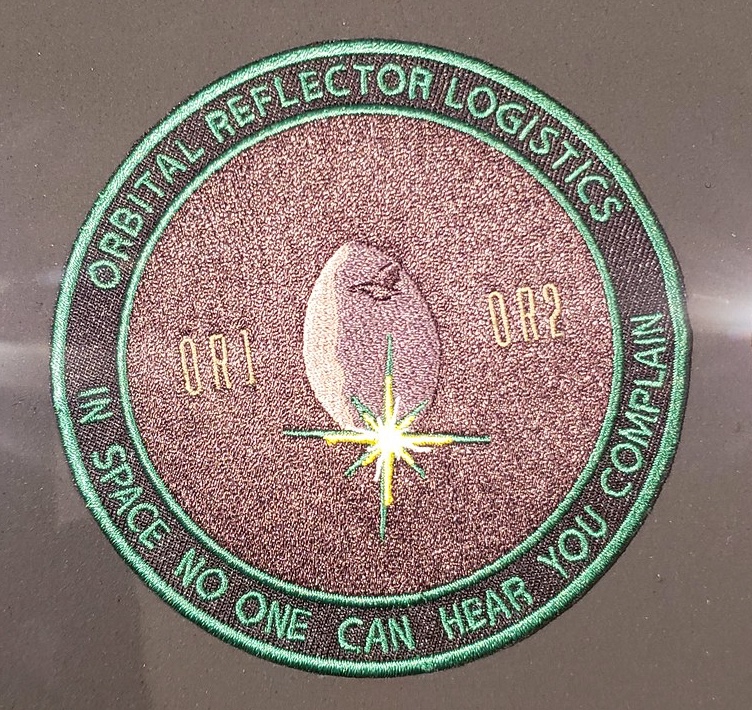
Orbital Reflector Logistics. In Space No One Can Hear You Complain
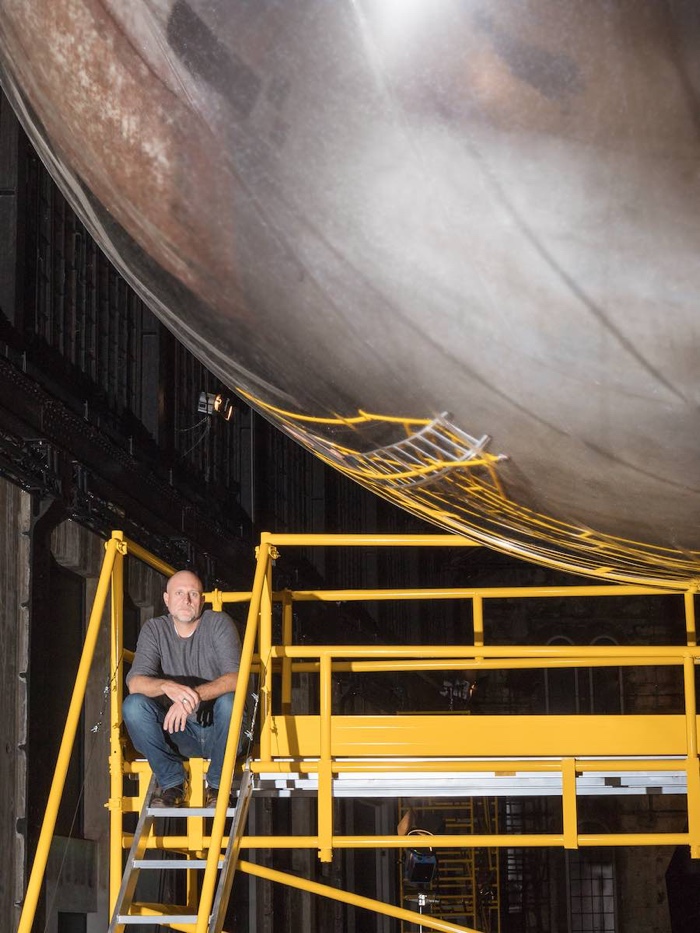
Trevor Paglen, Unseen Stars, 2020. Installation view at OGR Torino. Courtesy the artist and OGR – Officine Grandi Riparazioni, Torino. Photo © Melania Dalle Grave / DSL Studio
Trevor Paglen – Unseen Stars, curated by Ilaria Bonacossa with Valentina Lacinio, will remain unseen until better and safer times at OGR – Officine Grandi Riparazioni.

